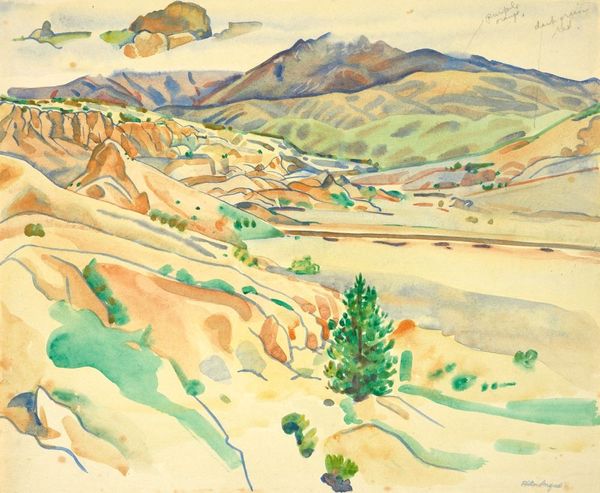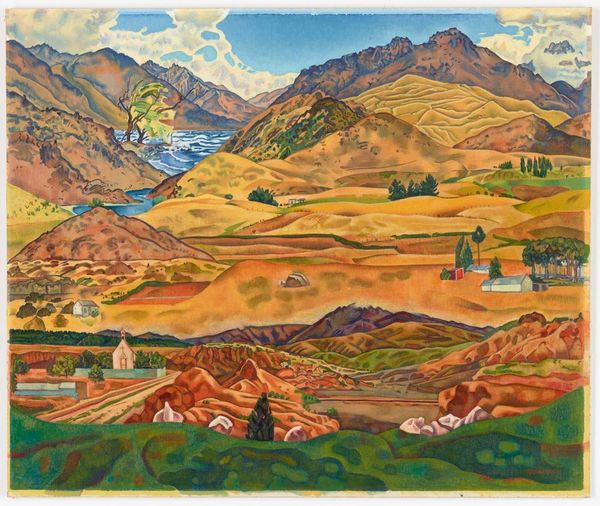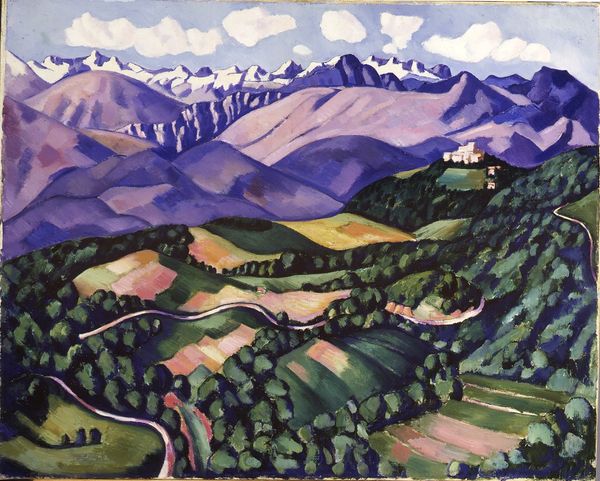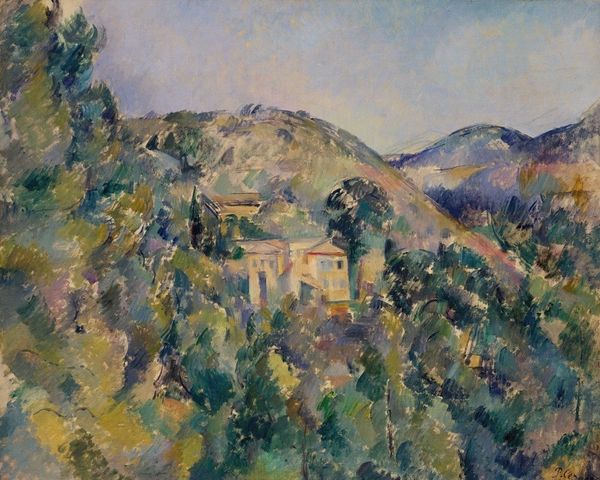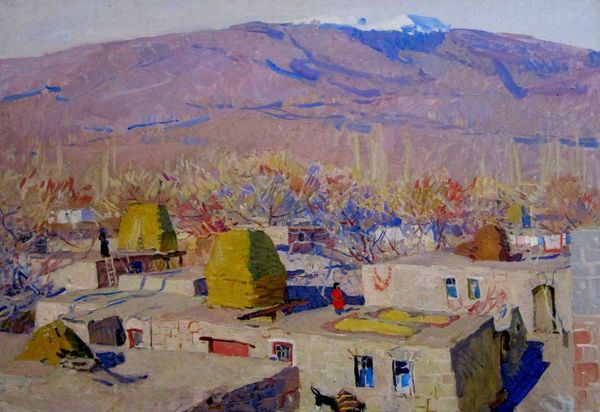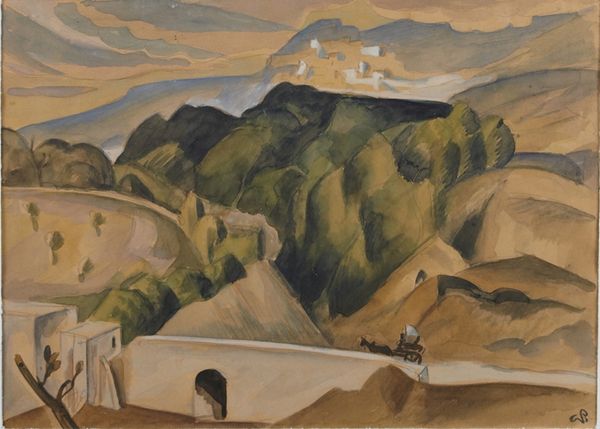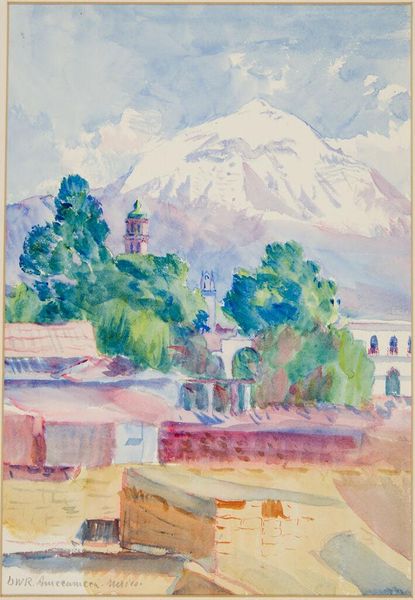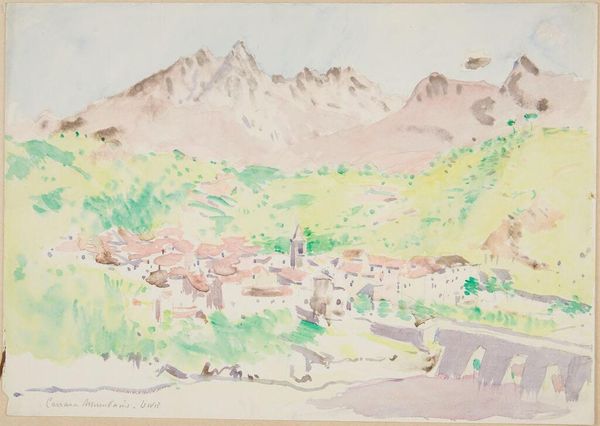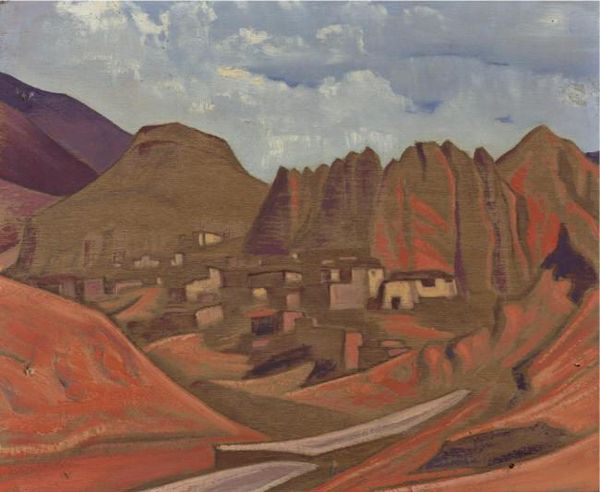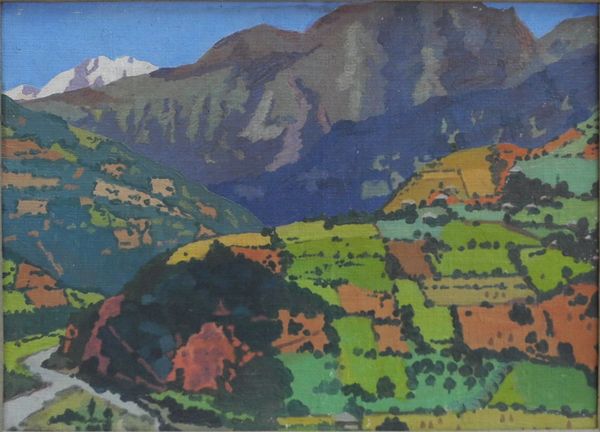
Dimensions: 68 x 78 cm
Copyright: Mariam Aslamazian,Fair Use
Curator: Today, we’re looking at Mariam Aslamazian's "Old Meghri," painted in 1980. It’s an oil painting. Editor: It strikes me as possessing an intense serenity. The colours are muted but there's something quietly majestic in how the small village nestles beneath those imposing mountains. Curator: Absolutely. Meghri, located in southern Armenia, near the Iranian border, has a unique position as a historical and cultural crossroads. The painting portrays more than just a landscape, it tells the story of a people surviving within it. Note how Aslamazian chooses not to depict signs of modern life, but instead emphasizes a timeless existence. Editor: Yes, and I can see a strong echo of enduring symbols here. The mountain itself as a metaphor for permanence, the village clustered for safety and community. The colours, though subtle, also speak. Earthy tones dominating to underscore a deep connection with the land. There’s an undeniable symbolic relationship with the idea of roots. Curator: Right. And thinking about her place as a female artist in the Soviet Union at the time, representing a community so deeply rooted becomes a kind of quiet resistance. It celebrates the cultural memory she witnessed eroding under soviet influence. She isn’t overtly protesting, yet she chooses to centre a culture often marginalized and even erased in historical narratives. Editor: That's beautifully said. Now I am especially moved by the location of the single church steeple standing out just beyond the rooftops, hinting a deep history that the buildings and residents themselves stand as part of. This building holds many symbolic significances: endurance, the link to history and an active part of people’s faith, which itself informs identity. Curator: The church operates as a signifier but also anchors us to the region's multilayered, often conflicting, political landscape of the time. And Aslamazian isn't simply presenting it: she uses that post-impressionist lens, those blocks of color, to interpret the culture. Editor: It is all just stunning to contemplate, and to find myself thinking on those long echoes across generations when faced with such landscape… The emotions that we draw are deep because our visual symbols trigger such a deep recognition. Curator: Exactly. The artwork highlights how visual representation, even seemingly straightforward landscape painting, are sites of political and cultural meaning. Editor: Absolutely. The mountains and colors may speak loudly, but they resonate for a thousand quiet reasons.
Comments
No comments
Be the first to comment and join the conversation on the ultimate creative platform.

